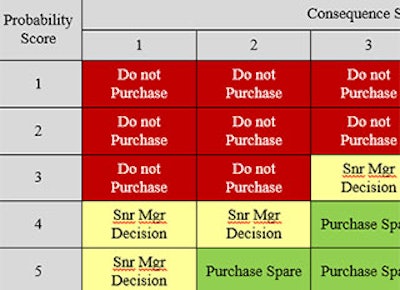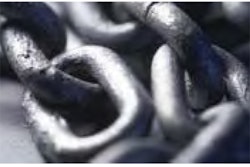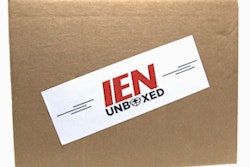
Go here to read Spare Parts Inventory: An Exercise in Risk Management, Part 1.
Risk Management Options
In all cases of risk management, there are four options for the management of the risk. As you evaluate each risk, you need to then adopt a management strategy based on the chosen option adopted for that risk or class of risks. The risk management options are presented here in the order in which they should be considered:
- Avoid the risk - One way to avoid risk is to re-design the work. In many circumstances, this might involve reengineering, choosing long lived assets, or even replacing the asset. The best way to avoid the risk of an iatrogenic failure (failure caused by the mechanic or electrician) is to design the system to not break down! Of course, that is tough but improvements in reliability that are based on equipment design are made every day. If you can’t eliminate the risk, the next step is to mitigate it.
- Mitigate the risk - Mitigation involves reducing the probability of the risk happening (using existing technology instead of new technology) or reducing the consequence of the risk or some combination of both. For example, in the aircraft industry, the risk of incorrect repairs has both safety and economic consequences. The industry mitigates this risk through rigorous repair procedures, certification of operators and mechanics, and close-in inspection. While these actions mitigate the risk, they do not eliminate it. In an industrial situation, one way to minimize the consequence of a breakdown risk is to have backup systems in place.
- Insure the risk - Insurance is a form of risk mitigation in that it minimizes the consequence of the risk. It is included here as a separate option because the key is to shift the financial impact of the risk from you to the insurer. Here are some common types of insurance:
- Fire insurance for fires.
- Liability insurance for accidents to visitors.
- Workmen’s compensation insurance for employee injuries.
- Business continuity insurance to cover catastrophic interruptions to business activity.
- Accept the risk - You decide that the risk probability or consequence is sufficiently low that you can handle it without help or additional systems. Sometimes this is referred to as ‘self insurance’. An example of this are companies with large vehicle fleets that don’t take out external insurance. They accept that they will need to repair/replace vehicles involved in an accident on the basis that in the long run, this is less expensive (because of the large fleet) than the insurance.
The Impact of Your Maintenance Policy
It is important to understand that the chosen maintenance policy for different classes of assets does drive parts usage. The maintenance policy is the strategy chosen to deal with the service and repair requirements of the various assets. Strategy’s might include using a contractor to take care of it completely (such as your elevators and HVAC) or replacing (but do not attempt rebuilds in-house – such as transmissions in a heavy duty truck shop) or doing all minor work and the vendor/contractor gets any heavy work (car rental company).
Each maintenance policy determines the need to carry the parts in your own inventory (assuming that the previous risk assessment indicated that you should stock parts). Table 4 shows some examples.
Table 4: The Parts Stocking Effect of Different Maintenance Strategies
Notes:
(1) You might hold some parts as an insurance policy against the contractor making a mistake but if they provide all service (such as a contract with Siemens on a Turbine) you might not have the expertise to choose the right parts. Part of your contract is for Siemens to stock certain parts in your location or nearby.
(2) While it is true that in a factory there are plenty of motors, cylinders, and gear boxes, the number of SKUs is smaller if we stock just the finished units rather than the parts to rebuild or repair all those items.
Eliminate the Condition and You Eliminate the Risk
It is good practice (and required by law in the U.S.) to inspect slings, chains, and other lifting gear every day. This practice minimizes the probability of a failure. Another practice is encompassed by good rigging techniques that examine the center of gravity, weight, and material being lifted, and that rigs each lift properly. A third practice is the clearing of lift paths so that if the lifting gear does fail, no one will get hurt.
Each of these practices mitigates a specific element of the overall risk but doesn’t eliminate it. With the lowered level of risk, the process owner can, in good conscience, accept the small probability of a failure. If the job can be done efficiently without lifts at all, then the risk has been eliminated.
The rule of risk management is, if it is possible to eliminate the condition, then the related risk is also eliminated. This approach applies particularly to safety and environmental hazards. When you eliminate a risk, of course, be sure you are not introducing a risk that is worse.
What if the consequences of the part falling are truly catastrophic? What if the lift involves a giant tank of poisonous gas or a nuclear core? I’ll bet that the lift planner will go through additional steps to lower the likelihood of failure 100 more times!
Emotionally Driven Inventory is Not the Solution
There is such a thing as too much risk coverage. For example, you can have insurance that covers all medical costs from the first dollar. People might congratulate you on your choice but in fact, this is over-insurance because it is always cheaper to cover the small risks yourself (by not insuring them) than it is to cover everything. This is sometimes referred to as an excess on your insurance and is an example of ‘self insurance’.
With spare parts inventory, having every single part in adequate quantities to ensure no possible stock outs ever is overly expensive, takes up too much room, and is inefficient. To have the right amount of stock, we must understand the consequences of not having the part but also the probability that we’ll need it. As mentioned previously, the probability of the requirement for a second spare is limited to the probability of a failure during the lead time in which you can restock the first spare, not the probability of failure during the remaining life of the equipment. Understanding this simple step of logic could save your company from holding thousands (or even millions) of dollars in unnecessary spare parts.
Managing Breakdown Risk
Since a breakdown can disable a whole plant or other asset, we need tools to detect when they are going to fail (to give us the most time possible) and techniques to extend the useful life of the asset.
It turns out we already have some powerful tools to manage breakdown risk:
- Our first line of defense is our quality operators and drivers. These people are the DEW line (Distant Early Warning line was a cold war line of radar stations that could detect Russian missiles coming over the pole) for your equipment. Properly trained and motivated, they can report abnormal sounds, vibrations, and operations. They also can perform essential safety checks and basic maintenance to ensure long life of equipment.
- Our second line of defense is our quality maintenance and PM system. By doing basic maintenance (such as TLC – Tighten, Lubricate, Clean), we know the asset will last longer. Often we can make an asset last long enough for our needs. The skilled mechanics have dozens of years of experience looking at equipment and catching subtle signs of impending failures. Their inspections tell us what is happening and, more importantly, what will happen to the asset.
- The third line of defense is a well-designed PdM (Predictive Maintenance) system. This includes all kinds of instruments, gauges, sensors, computers, and other high tech gear that allow us to see inside the equipment. The computers can talk to us about what is happening; the scanners can see heat, hear high frequency squealing, or feel subtle vibration.
- The fourth line of defense is the skills of the mechanics coupled with the right tools and the spare parts.
Think of Your Inventory as a Kind of Insurance Policy
When you look at your spare parts inventory, imagine that you are looking at shelves of very specific insurance policies. Each inventory item that you purchase is a way of mitigating the consequence of failure of the part in operation. Now ask yourself: How often your boss comes to your office and insist that you had better use 10 percent of that insurance. Of course that never happens.
If you successfully perform risk management on insurance policies you can achieve two outcomes:
- The least cost for insurance by having as little as is reasonably possible, and
- Minimal consequences for the organization should any risks that the insurance covers come to pass.
With insurance, you want to cover only what you need and can afford – nothing more. It’s the same with your spare parts inventories.
Of course, with your spare parts, it is important to cover the risk but it is also important to be able to justify everything on the shelf – holding only what you need, and can justify, and nothing more. That is the key to effective spare parts risk management.
About the Authors
Joel Levitt is the Director of International Projects, Life Cycle Engineering. He has written standard-setting books on maintenance management, planning, shutdowns, and other maintenance topics for factories, fleets and major industrial facilities. Find out more about Joel at www.LCE.com.
Phillip Slater specializes in Materials and Spare Parts Management. He is the founder of the online training and information site SparePartsKnowHow.com, and the author of 8 books, including Smart Inventory Solutions and The Optimization Trap. For a complimentary copy of the ebook 5 Myths of Inventory Reduction please visitwww.PhillipSlater.com.























